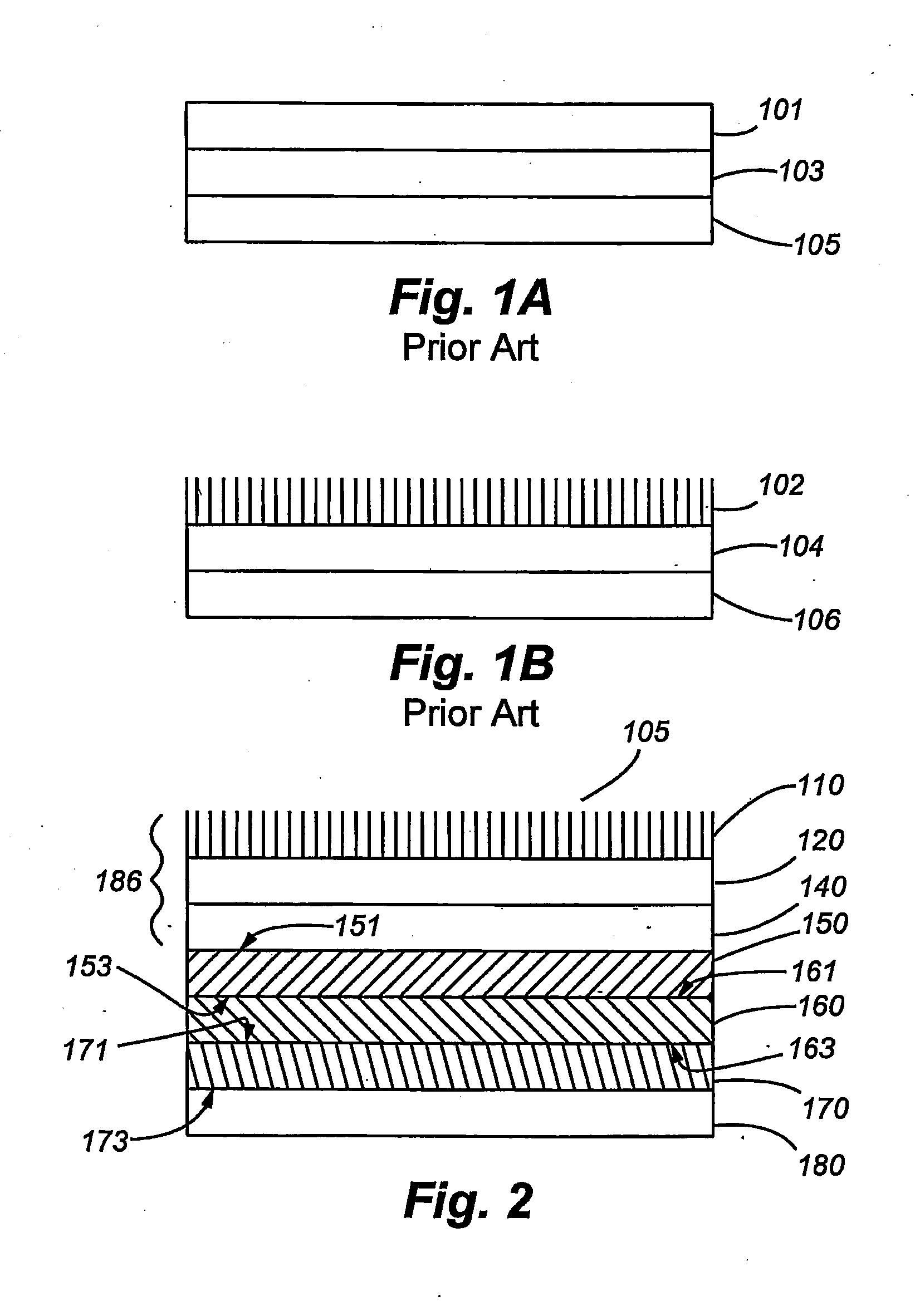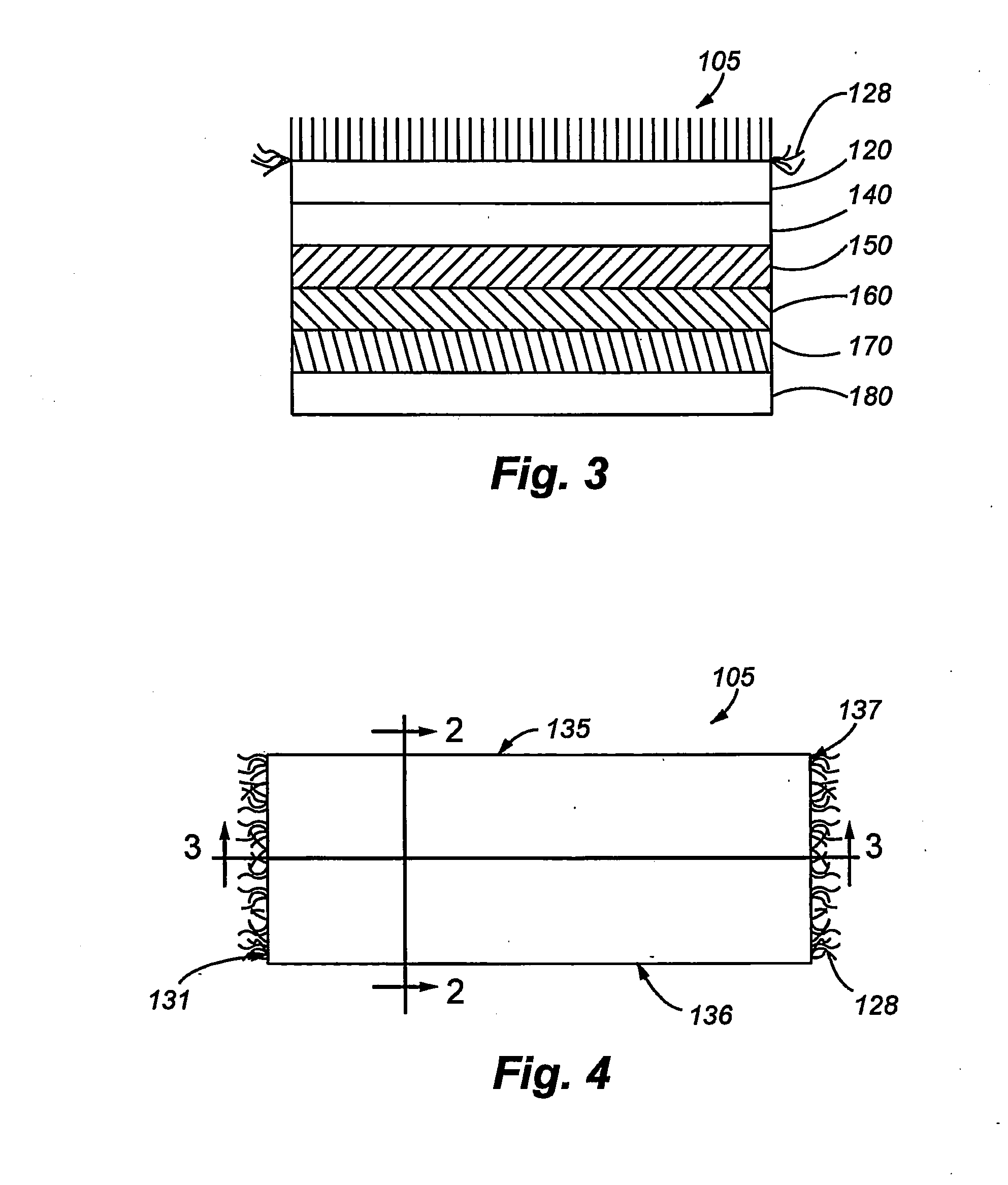Rigid mouse pad
a mouse pad and rigid technology, applied in the field of flocked objects, can solve the problems of insufficient rigidity of the mouse pad, inability to accurately and/or precisely control the movement of the mouse, and inability to operate when positioned on an uneven surface such as a user's lap, etc., and achieve the effect of superior mouse pad surface performan
- Summary
- Abstract
- Description
- Claims
- Application Information
AI Technical Summary
Benefits of technology
Problems solved by technology
Method used
Image
Examples
Embodiment Construction
[0022]A first rigid mouse pad embodiment is shown in FIGS. 2-4. The rigid mouse pad article 105 comprises a flock assembly 186, a rigid sheet material 160 having a first side 161 and a second opposing side 163, a first adhesive layer 150 positioned between the flock assembly 186 and the first side 161 of the rigid sheet material 160 and a second adhesive layer 170 positioned between the second opposing side 163 of the rigid sheet material 160 and a non-slip material 180. The flock assembly 186 includes a third adhesive layer 120 positioned between a plurality of flock fibers 110 and a resilient layer 140. Referring to FIG. 4, the rigid mouse pad surface is substantially rectangular, having longer sides 135 and 136 and shorter sides 131 and 137. The mouse pad 105 can have fringe 128 added to the shorter sides 131 and 137 and / or longer sides 135 and 136 for aesthetic reasons. If used, is preferred to add fringe 128 at the interface of the flock fibers 110 and the resilient layer 140.
[...
PUM
 Login to View More
Login to View More Abstract
Description
Claims
Application Information
 Login to View More
Login to View More - R&D
- Intellectual Property
- Life Sciences
- Materials
- Tech Scout
- Unparalleled Data Quality
- Higher Quality Content
- 60% Fewer Hallucinations
Browse by: Latest US Patents, China's latest patents, Technical Efficacy Thesaurus, Application Domain, Technology Topic, Popular Technical Reports.
© 2025 PatSnap. All rights reserved.Legal|Privacy policy|Modern Slavery Act Transparency Statement|Sitemap|About US| Contact US: help@patsnap.com



